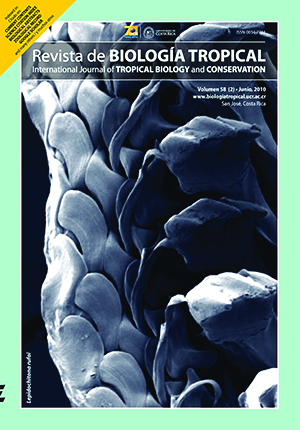Abstract
The 1983-1984 mass mortality event of Diadema antillarum affected more than 93% of the total Caribbean population. Although there are no records about the status of Diadema populations before and after die-off on Cuban reefs, anecdotal information suggests that populations were struck. We analyzed spatial variation in the abundance and size structure of D. antillarum in 22 reefs sites in Jardines de la Reina, from June 2004 to September 2005. Counts of Diadema were performed in five 30x2m transects at each sampling site and sampling time, and test diameters were measured in September 2005 at the same fore reefs. Abundances were higher at reef crests (mean densities 0.08-2.18 ind./m2), while reef slope populations reached a maximum site level of 0.13 ind./m2 at only one site and showed values up to three orders of magnitude lower than those from reef crests. Highest abundance occurred at the west margin of major channels between keys where larval recruitment seems to be favored by local oceanographic features and facilitated by the abundance of Echinometra lucunter. The size frequency distribution of D. antillarum indicates that recruitment began to be noticeable three years before September 2005, suggesting these populations were depleted in the past and they are recovering now.##plugins.facebook.comentarios##

This work is licensed under a Creative Commons Attribution 4.0 International License.
Copyright (c) 2010 Revista de Biología Tropical
Downloads
Download data is not yet available.






